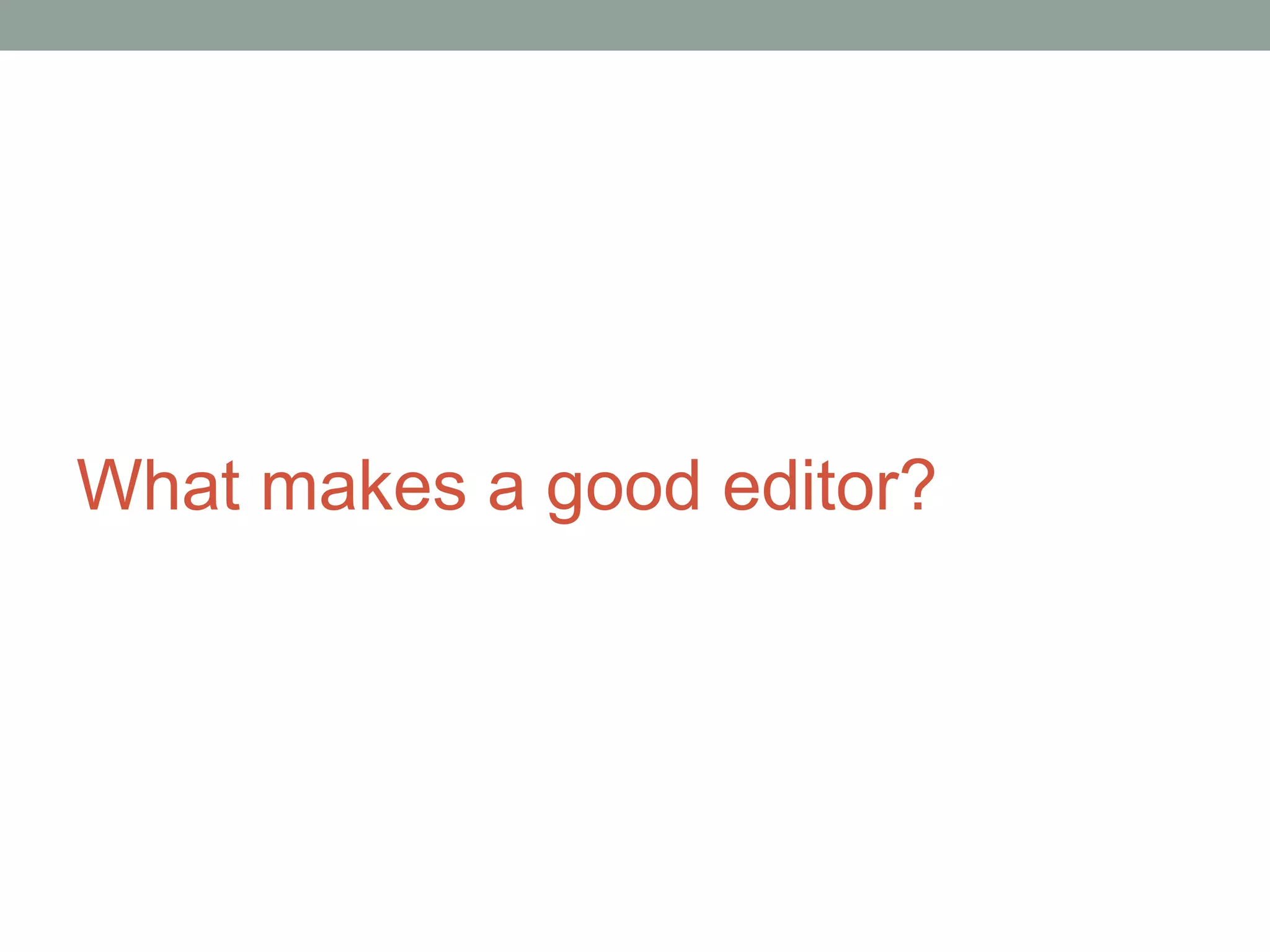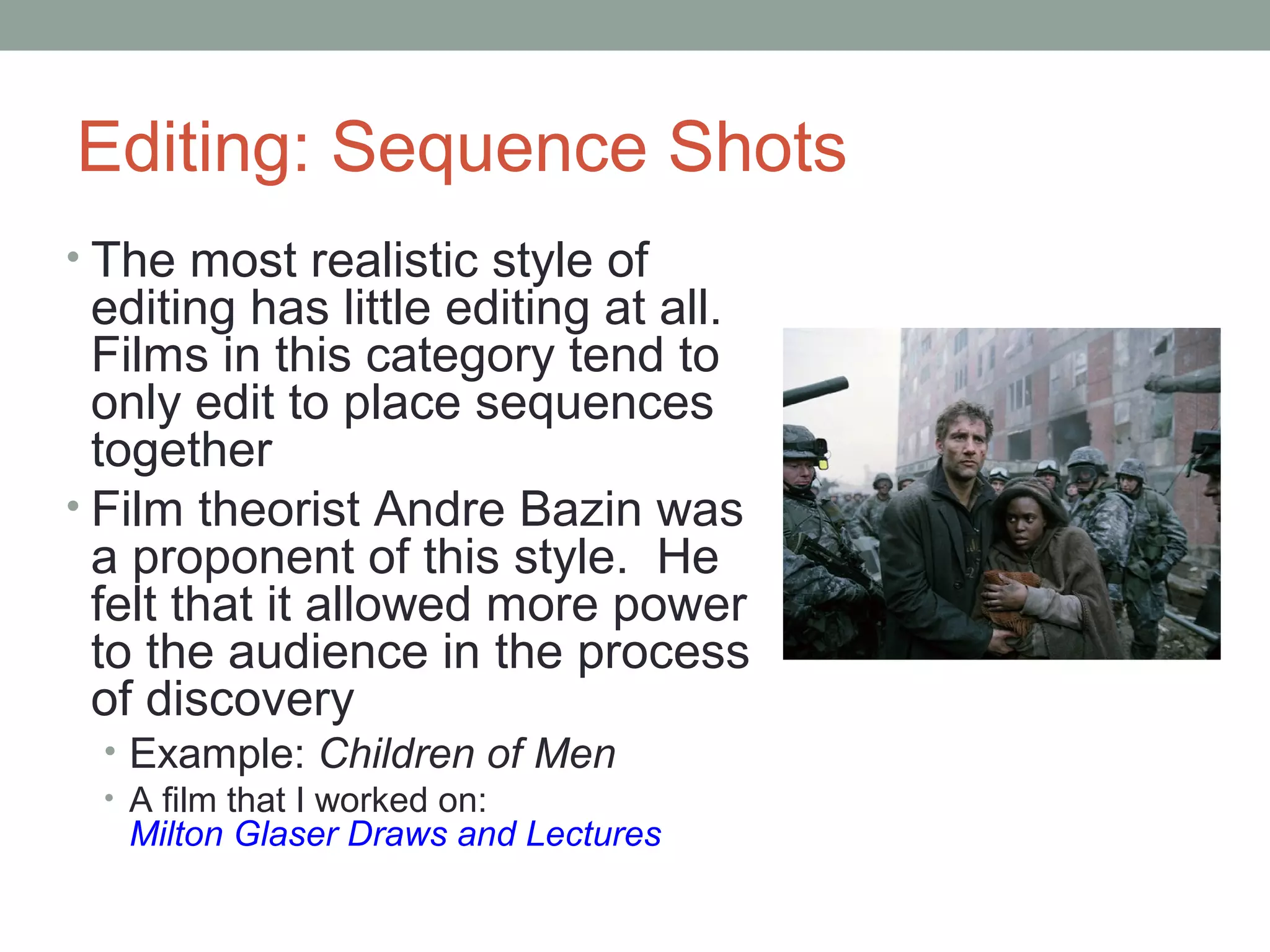The editor's role is to coordinate shots and eliminate unwanted footage to craft a coherent narrative. They select usable takes, trim extra frames before and after each take, and decide how to transition between shots. The editor works closely with the director to ensure scenes edit together smoothly. Different editing styles, like realism versus formalism, determine how obtrusive the edits are and how much meaning is derived from the editing itself versus performance. Transitions like cuts, dissolves and jump cuts signal relationships between shots.













